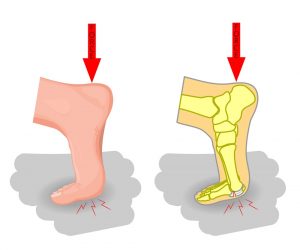Call our friendly podiatrists today on (08) 9586 3046
 The sesamoid bones are two spherical shaped bones that sit under the head of the 1st metatarsal bone whose function is to aid the mechanical action of the tendons. The inflammation of the sesamoid bones and surrounding tissues is known to be sesamoiditis. This often causes intense pain, where it can be directly felt below the metatarsal joint in the big toe.
The sesamoid bones are two spherical shaped bones that sit under the head of the 1st metatarsal bone whose function is to aid the mechanical action of the tendons. The inflammation of the sesamoid bones and surrounding tissues is known to be sesamoiditis. This often causes intense pain, where it can be directly felt below the metatarsal joint in the big toe.
Pain is generally experienced while walking. However any weight bearing exercise is likely to exacerbate the symptoms. The pain is greatest during “toe off” when walking, this is especially due to the fact that the body weight transfers onto the toes.
Sesamoiditis does not solely affect the bones, but includes tenderness of the surrounding tissues. This intensifies when direct pressure is inflicted onto the area. When the weight is taken off, the pain usually rapidly subsides. Pain experienced may persist for longer periods as the condition deteriorates. The most commonly sign for this condition is a small degree of swelling under the first metatarsal joint.